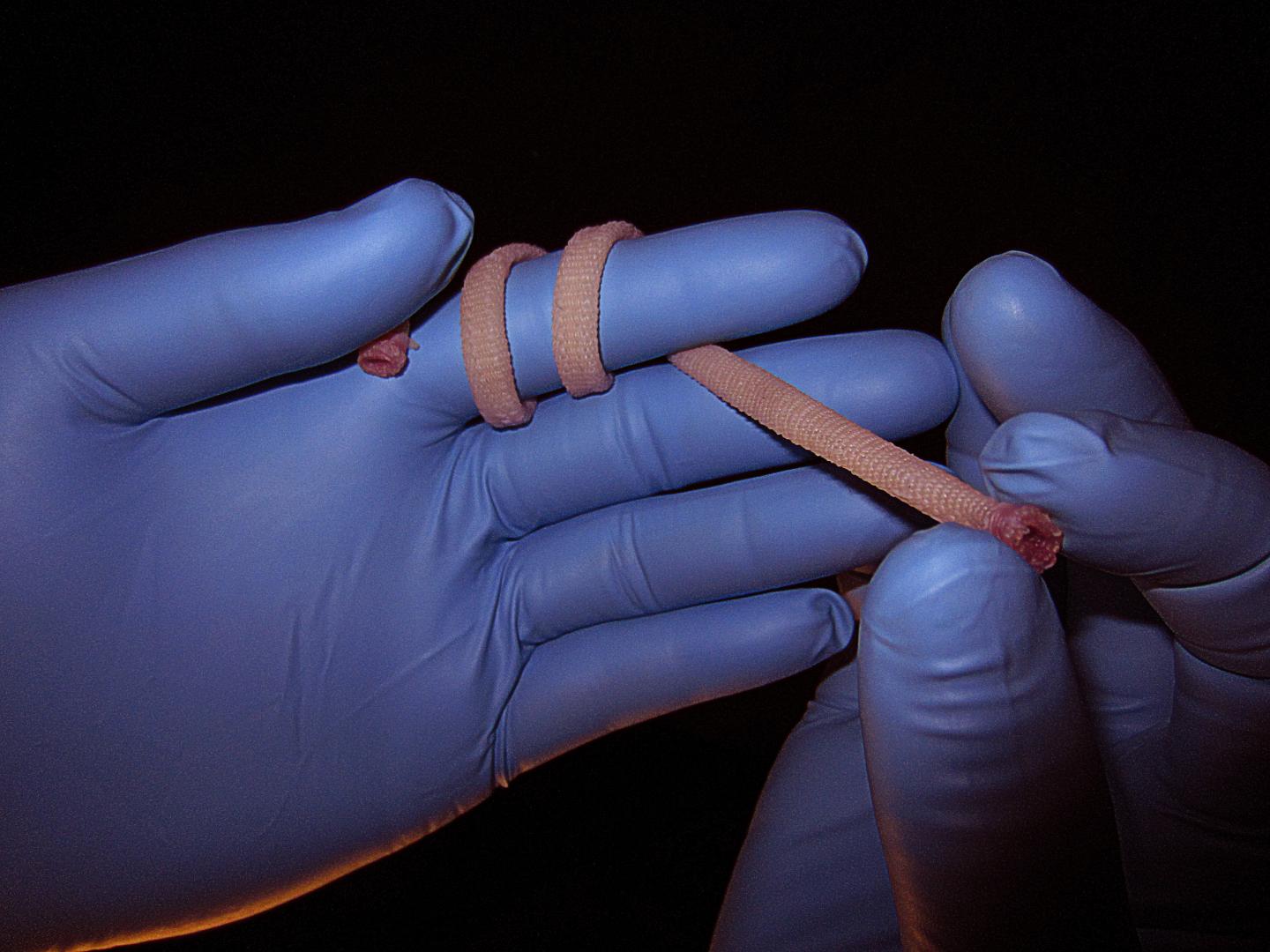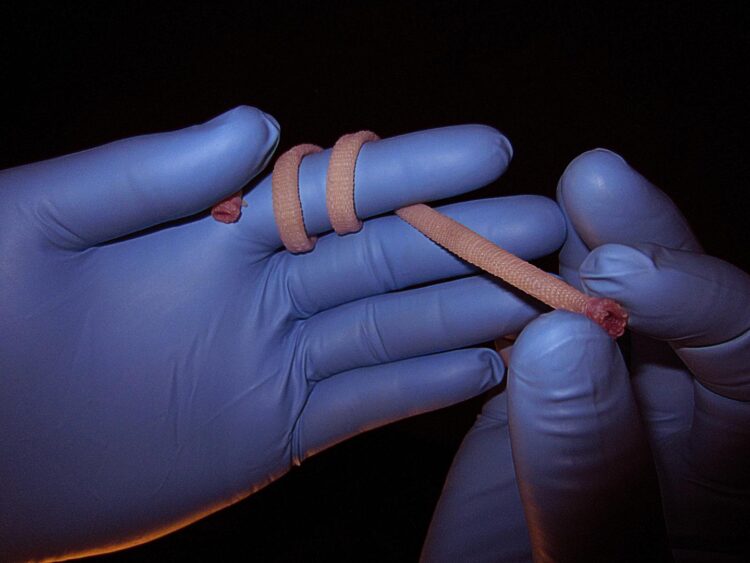Versatile tissue engineering approach could aid in repairing damage for many tissues and organs

Credit: Nicolas L’Heureux, Inserm/University of Bordeaux, France
Bethesda, MD – Researchers have used threads made of engineered human tissue to weave blood vessels that could one day help repair diseased or damaged blood vessels.
“Blood vessels are just one example of what can be done with our new textile approach to tissue engineering,” said research team leader Nicolas L’Heureux, PhD, director of research at Inserm/University of Bordeaux in France. “It can be used to make practically any shape by weaving, braiding or knitting the threads and allows very good control of the mechanical properties of the final product.”
Synthetic blood vessel grafts made of woven synthetic polymer yarn are sometimes used to replace diseased arteries. However, the body recognizes the polymer as foreign, which causes blood to clot on these grafts and creates a scar that can clog the tube. Because blood vessels created with the new textile-based approach don’t require any synthetic materials, they are likely to be accepted and become part of the body.
L’Heureux was scheduled to present this research at the American Association for Anatomy annual meeting in San Diego this month. Though the meeting, to be held in conjunction with the 2020 Experimental Biology conference, was canceled in response to the COVID-19 outbreak, the research team’s abstract was published in this month’s issue of The FASEB Journal.
The threads used for the new textile approach are made of a biomaterial called cell-assembled matrix (CAM) developed by L’Heureux’s research team. CAM is mostly collagen, which is the most abundant protein the body and the protein that makes tissues and organs mechanically strong. CAM is well-accepted by the body because it is entirely human and not chemically modified.
In the new study, the researchers show that they can make yarn by cutting CAM sheets into ribbons that can be used directly or twisted into threads. They used these threads to weave blood vessels that displayed excellent mechanical properties without the need for any synthetic scaffolding or chemical treatments.
“It is time consuming and costly to get CAM layers to stick together,” said L’Heureux. “The new textile assembly approach is not only more versatile but also has the potential to be automated which would make it even faster, easier and cheaper to use.”
Because a collagen scaffold is an integral part of most organs, CAM could be used to jumpstart the regeneration of many tissues and organs. So far it has been used to make lab-grown skin for burn patients and guides that help repair nerve injuries.
The researchers are now building additional blood vessel prototypes and learning more about the best ways to handle CAM threads and ribbons. They will soon start testing the vascular grafts in animals as a step toward eventual clinical trials in people.
###
Contact the media team for more information.
Images available.
About Experimental Biology 2020
Experimental Biology is an annual meeting that attracts more than 12,000 scientists and exhibitors from five host societies and more than two dozen guest societies. With a mission to share the newest scientific concepts and research findings shaping clinical advances, the meeting offers an unparalleled opportunity for exchange among scientists from across the U.S. and the world who represent dozens of scientific areas, from laboratory to translational to clinical research. http://www.
About the American Association for Anatomy (AAA)
The American Association for Anatomy is an international membership organization of biomedical researchers and educators specializing in the structural foundation of health and disease. AAA connects gross anatomists, neuroscientists, developmental biologists, physical anthropologists, cell biologists, physical therapists, and others to advance the anatomical sciences through research, education, and professional development. To join, visit anatomy.org.
About The FASEB Journal
Receive monthly highlights from The FASEB Journal by e-mail. Sign up at http://www.
Find more press materials at: https:/
Media Contact
Anne Frances Johnson
[email protected]





